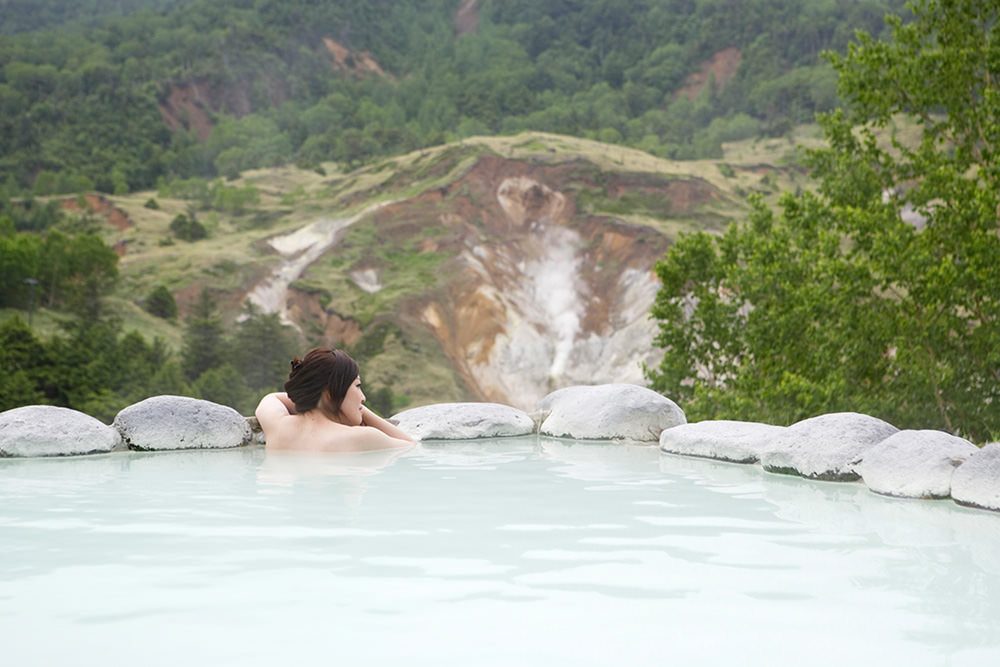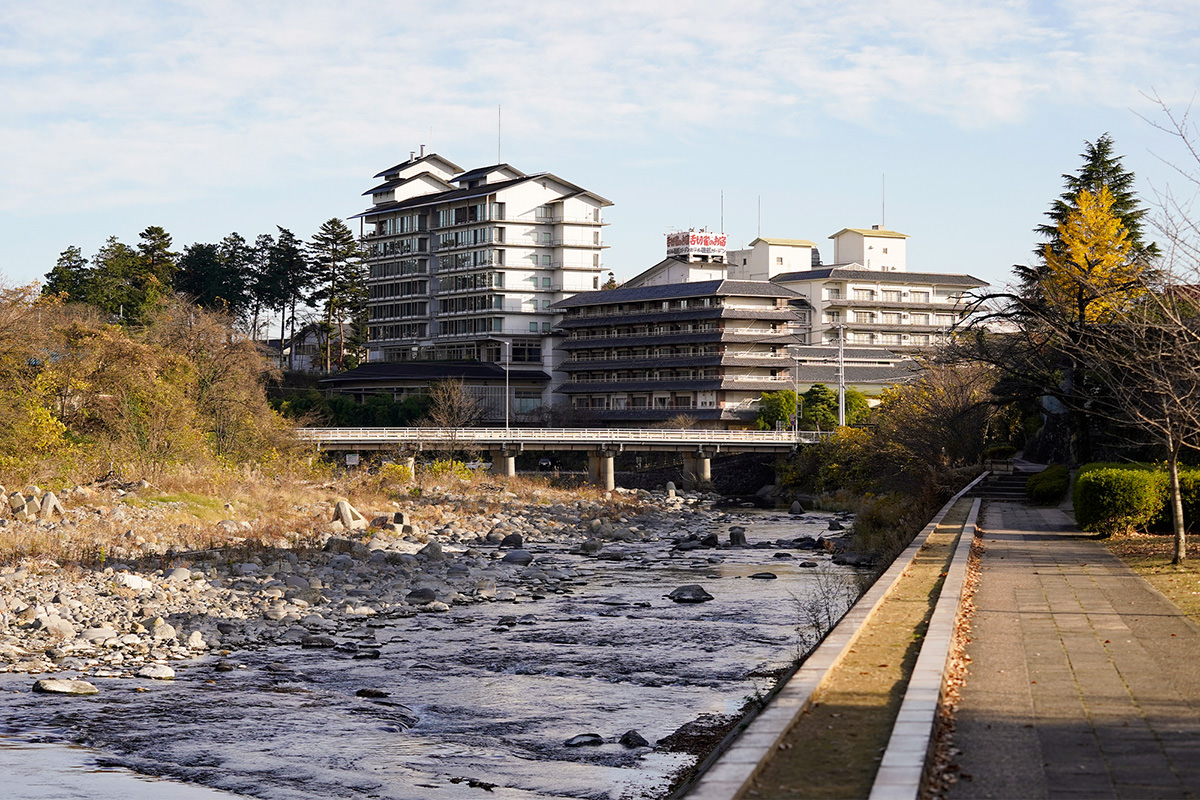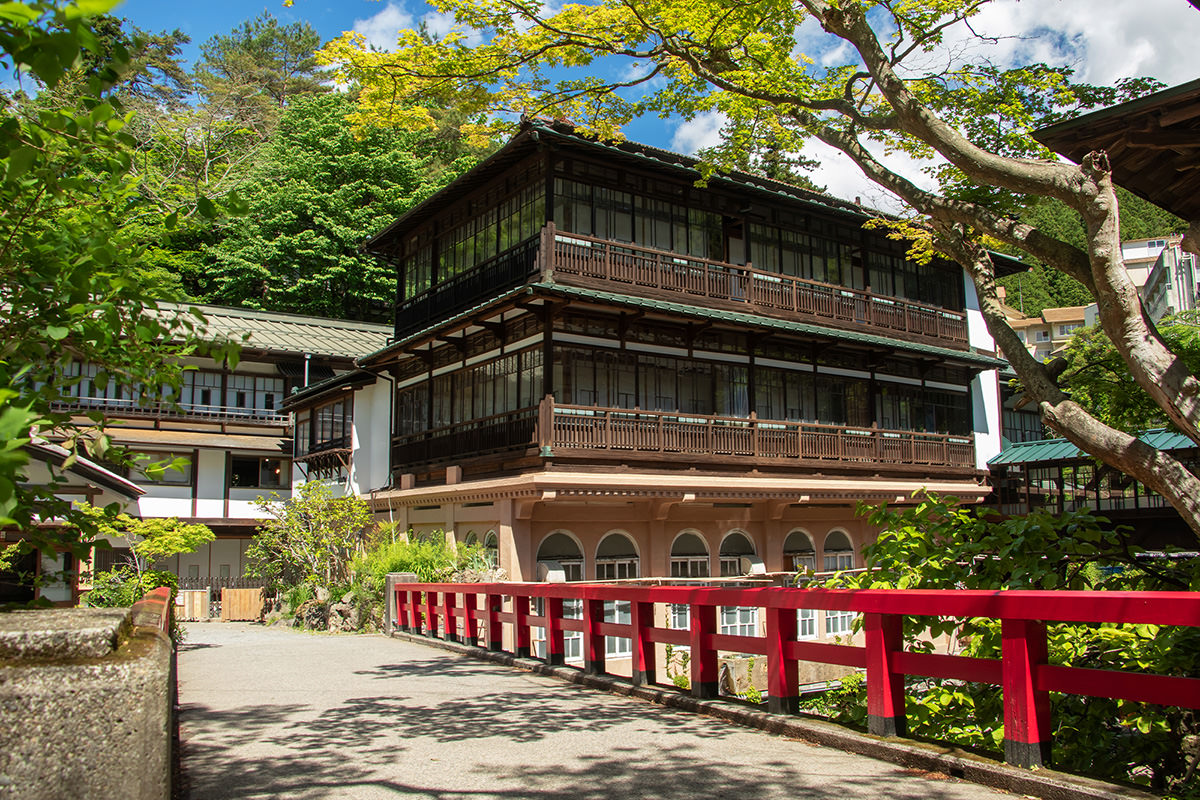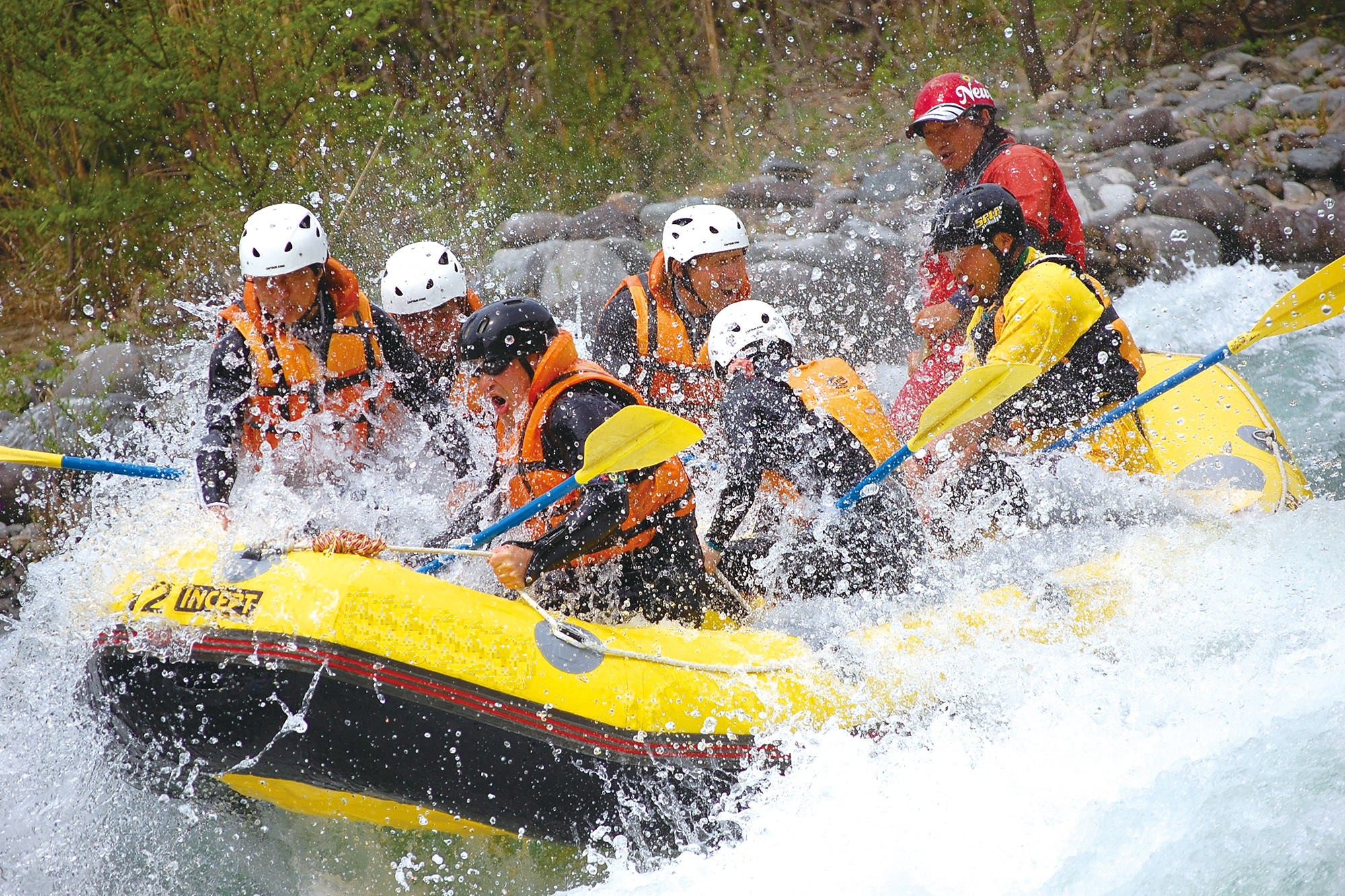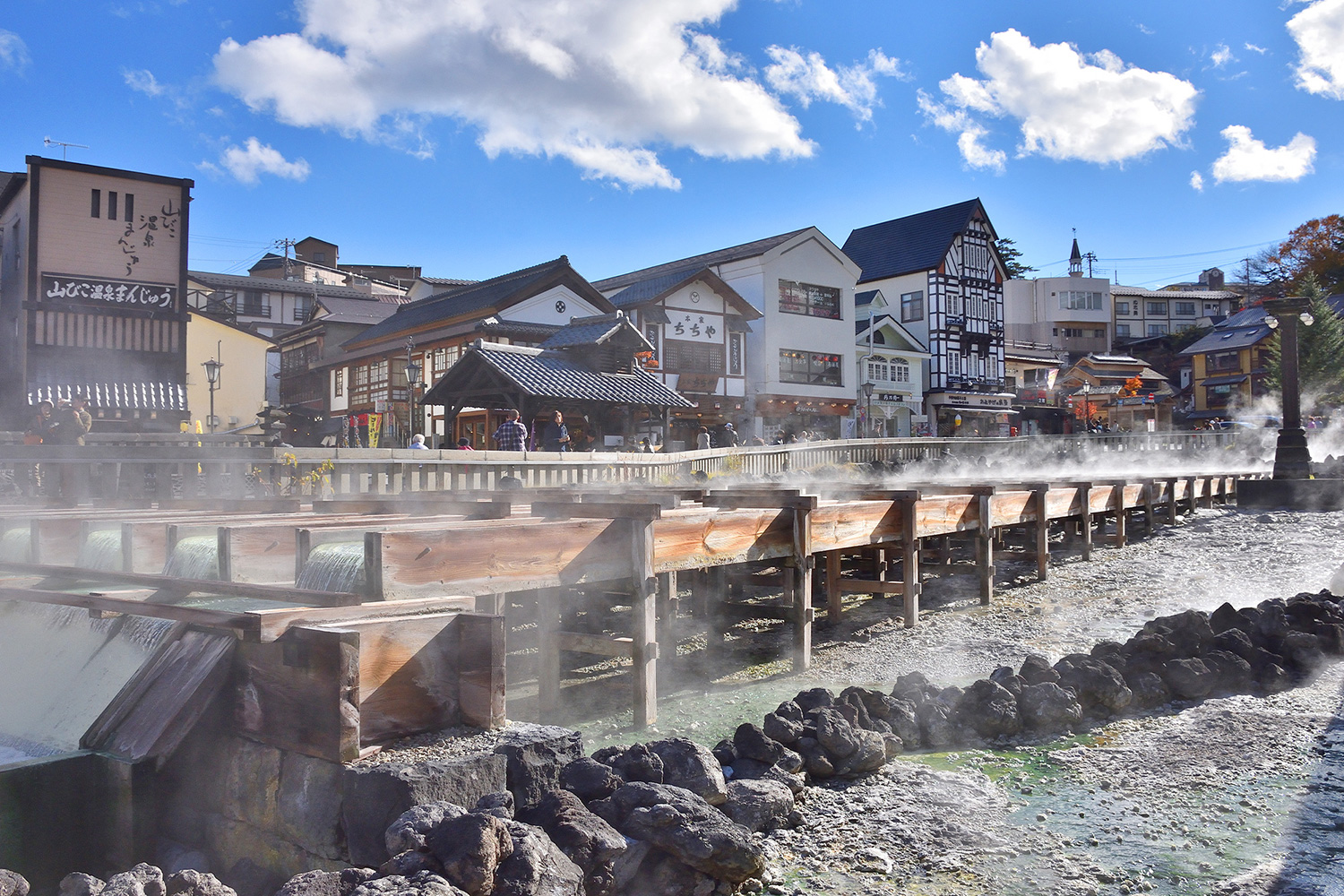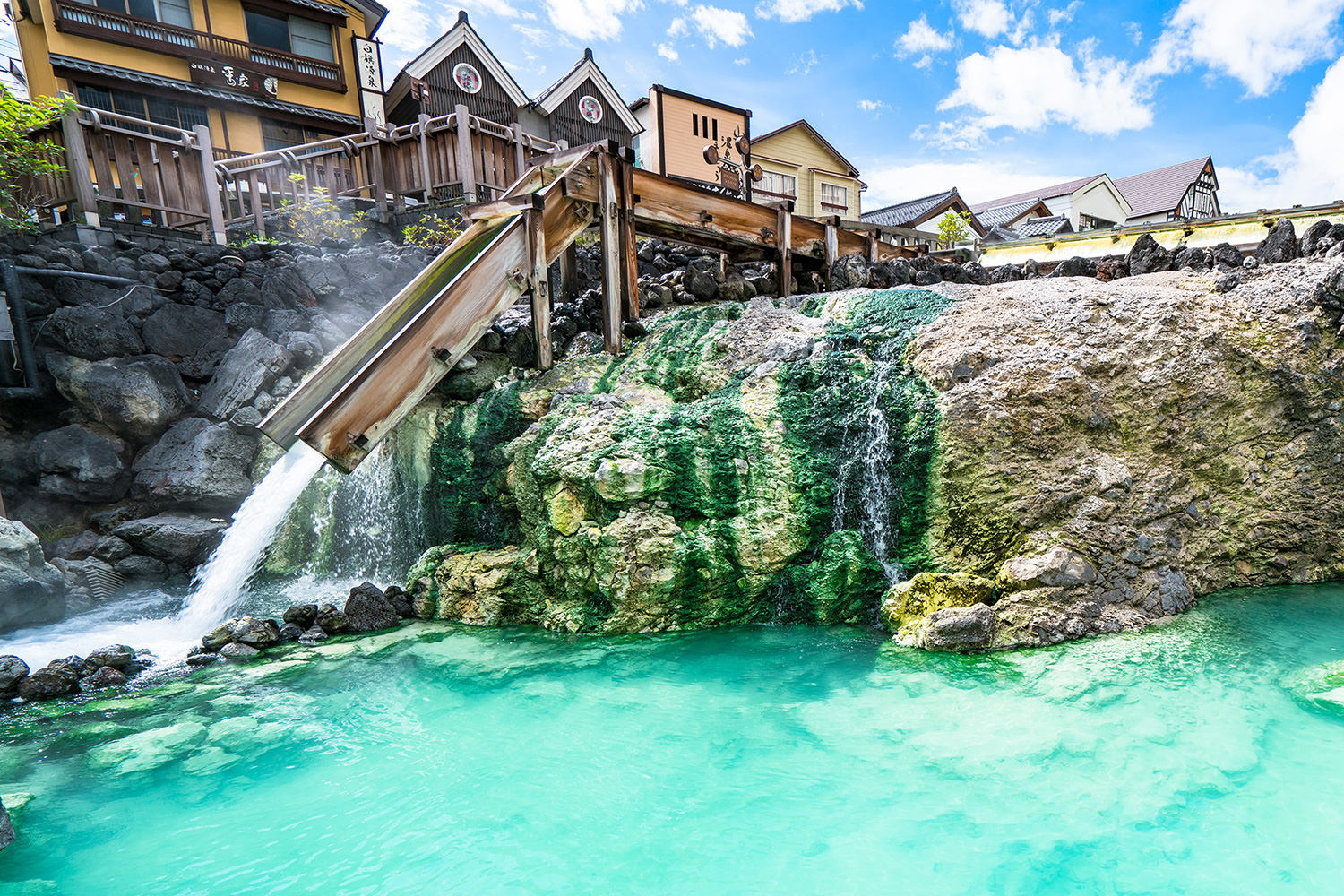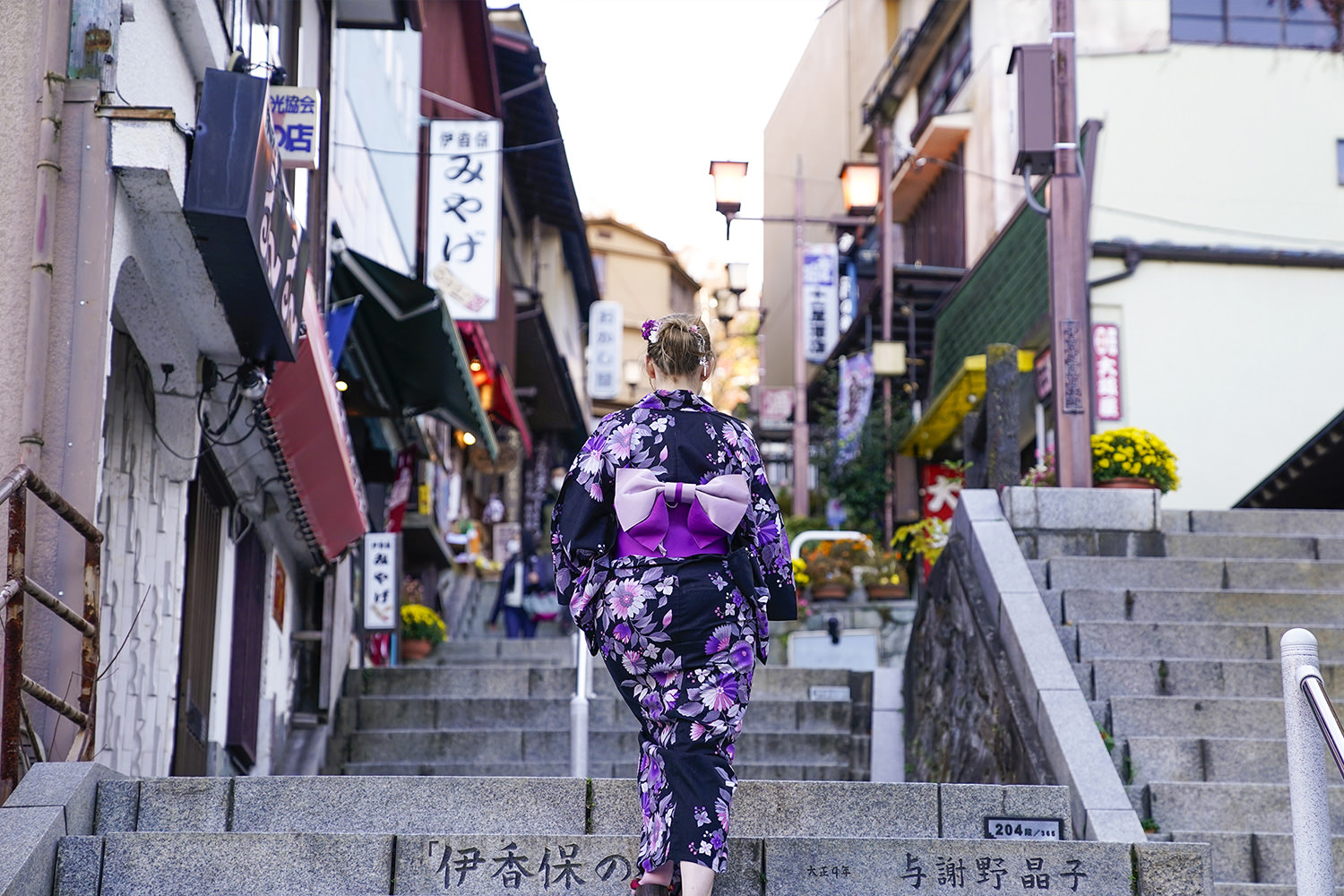STORY
How to Enjoy Gunma’s Onsen
All about onsen culture, from health benefits to etiquette
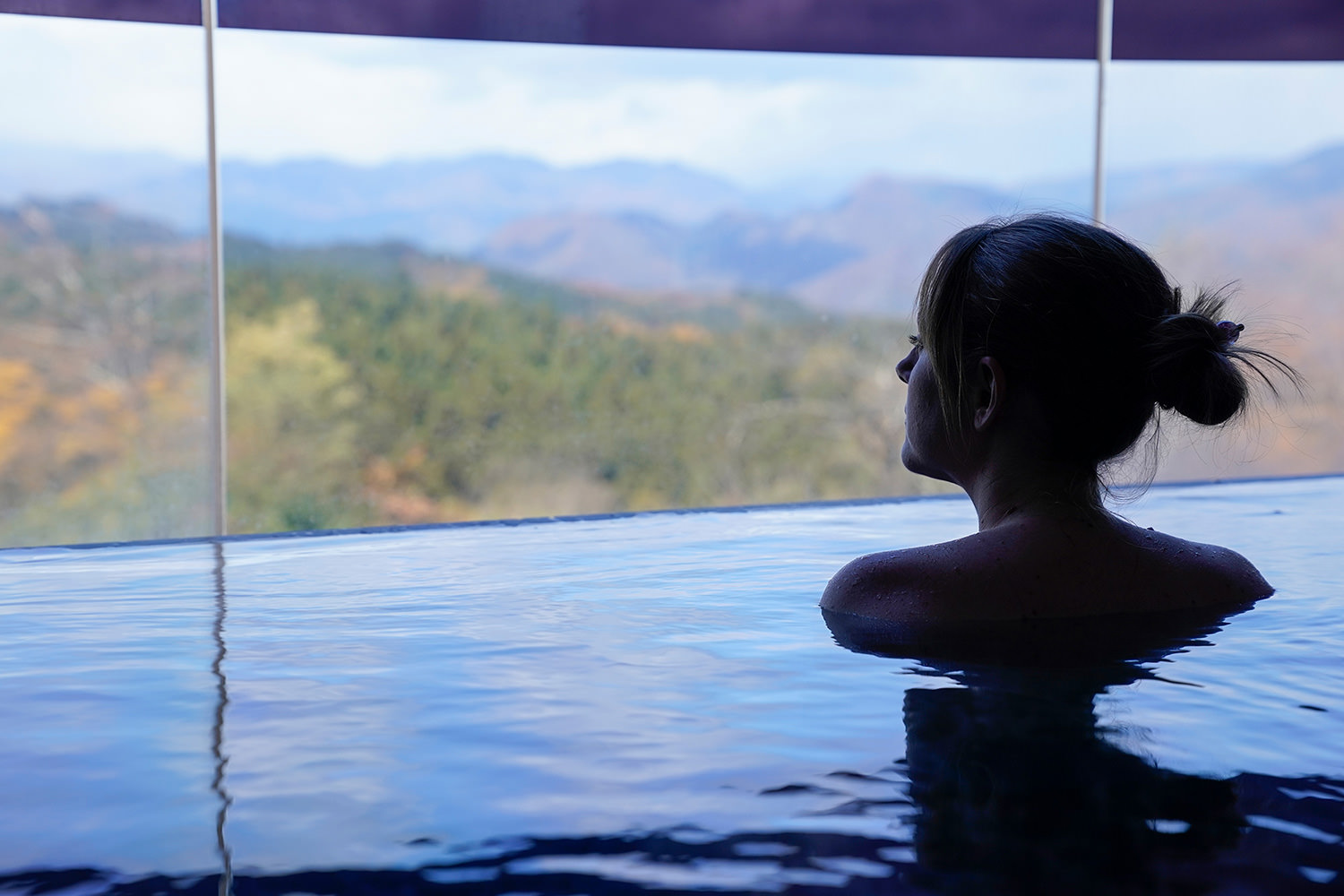
Last updated: June 16, 2021
The ritual of onsen bathing is deeply ingrained in Japanese culture. The experience is at once relaxing, healing, and social. Gunma is blessed with abundant natural hot springs, which feed the onsen resorts across the region. Whether gazing at the scenery from an outdoor bath, soaking in the history of a wooden bathhouse, or relaxing in a private bath, onsen bathing is not to be missed. For first timers, the idea of bathing naked with strangers can prompt a bit of anxiety, but with a few pointers, everyone can enjoy Gunma’s onsen.


